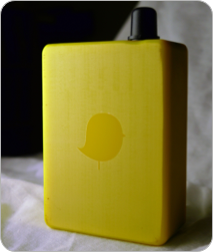
Problem being addressed[edit | edit source]
Water testing devices that are currently in the market are often ill-equipped to provide timely and widespread water quality information. Having the ability to obtain this information is especially important following an unexpected disaster, and/or in isolated resource-poor settings. Being able to pin-point where clean drinking water is needed will allow NGOs and governments to quickly address a problem if it is present, and not waste supplies.
Detailed description of the solution[edit | edit source]
The Water Canary uses spectral technology to test for disease-causing pathogens. It requires very minimal training and almost no education, including literacy, for its operator. Moreover, the device transmits data with GPS location information wirelessly. This greatly increases the efficiency of organizations attempting to address the needs of afflicted areas.
Relevance to developing country settings[edit | edit source]
This device is designed for use in environmental monitoring, preventive medicine, sanitation education, emergency preparedness and disaster response in resource-poor settings.
Designed by[edit | edit source]
- Design from: Clay Shirky's 2009 Design for UNICEF Class at ITP, a collaboration between NYU and UNICEF's Innovations Lab. The Water Canary was the winner of the 2010 Stern Social Venture Business Competition.
- Manufacturer: Water Canary.
- Manufacturer location: New York, New York USA
References[edit | edit source]
Internally generated reports[edit | edit source]
TED Talks. (2012.) Sonaar Luthra: Meet the Water Canary. Youtube link available here.
Externally generated reports[edit | edit source]
Wakefield, J. (2011, July 13). TEDGlobal: Technology to crowd-source clean water. BBC News: Technology. Link available here.